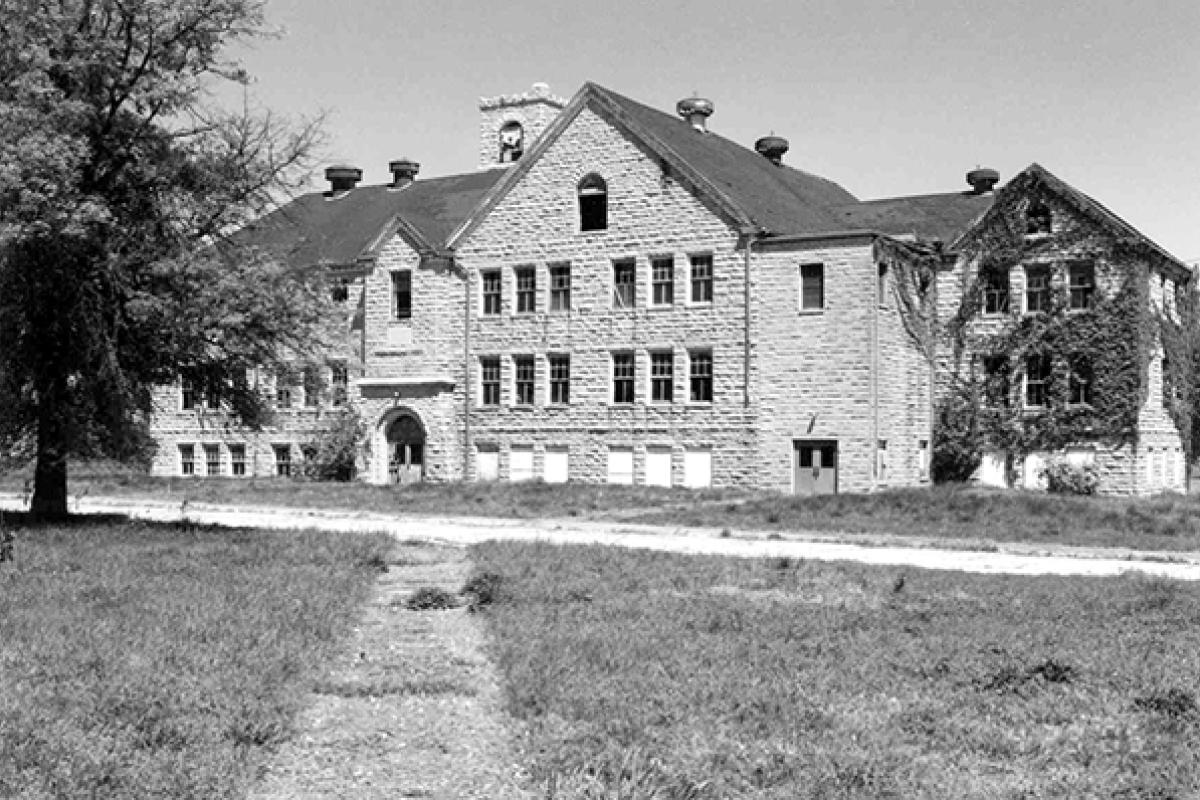Chilocco Indian Agricultural School

Chilocco Indian Agricultural School
On May 17, 1882, the U.S. government authorized the construction of an off-reservation Indian boarding school in Indian Territory, what is today north-central Oklahoma near the Kansas border. Formally opening on January 15, 1884, this school became known as the Chilocco Indian Agricultural School and other names. Based on the Carlisle model, Chilocco separated children from their families and subjected them to an education based on the principles of "civilizing" and Christianizing Indian youth in preparation for a life in white-American society as laborers, farmers, and domestic workers. The school functioned to eradicate Indian identities, languages, beliefs, and ways of life.
The first students at Chilocco arrived in 1884. Hundreds of Pawnee students attended Chilocco from then until its closing in 1980.
The early Pawnee students endured harsh living conditions including a lack of food disease, death, homesickness, cramped conditions, and poor sanitation. Students also endured physical and emotional abuse by employees. Both living conditions and the workspaces were too small, needed repairs and upgrades, and were considered inadequate for the needs of the students and the school. The early years of Chilocco also lacked a hospital for proper sanitation of the school and to take care of sick students.
Education at Chilocco was segregated. Boys and girls attended separate classes until the 1930s. Boys learned farming, shoemaking, blacksmithing, and tailoring. Male students could also pursue trades in printing, commercial baking, butchering, construction and repair, masonry, painting, electrical wiring, shoe and harness making and repair, plumbing, and general mechanics. In contrast, the girl’s vocational education was limited to home economics and housework duties such as sewing, laundry, kitchen duties, cleaning, and polishing. Female students were burdened to cook, serve, clean, and sew clothes, to keep the school self-sufficient while young boys were tasked with tending to the school’s farm. Students did not always receive the materials they needed for vocational classes and academic courses were inadequate for sufficient education. Indian boarding schools prepared Indian students for employment as support staff, vocational instructors, or manual labor for Indian schools.
Chilocco had a set schedule and daily routines for its early students:
Sunday school was held each Sunday along with general inspection in quarters, and YMCA and YWCA meetings.
Monday through Thursday industrial classes began at 7:30 AM to 11:30 AM, academic classes began at 8:30 AM to 11:30 AM. After lunch, industrial classes resumed from 1 PM to 5 PM and academic classes resumed from 1:15 PM to 4 PM. From 7 PM to 8 PM, study hours took place in classrooms or living quarters.
Friday schedules were the same as Monday-Thursday but meetings of literary societies began at 7 PM.
Industrial courses took place on Saturday at the same time as Monday-Thursdays from 7:30 AM to 11:30 AM. A matron or disciplinarian would be required to see if students were properly bathed. Students were allowed one Saturday per month in town.
Sunday school was held each Sunday.
It wasn’t until the late 1920s and 1930s that students were able to participate in recreational activities such as honor societies, fine arts classes, choir clubs, band and orchestra clubs, and various athletic activities for both boys and girls.
Chilocco experienced changes throughout its history. In the early 1930s, reforms for the school were introduced to improve social conditions for boys and girls, add more academic criteria for courses, and lessen the work for students to upkeep the school. However, Chilocco’s core elements remained the same: students were separated from their homes and family, strict discipline continued to be enforced, and curricula still focused on vocational classes more than academic courses. Moreover, student enrollment increased for young adult students rather than for young children.
Amid the changing social conditions that took place in the 1960s and 1970s, Indian enrollment increased in public schools as a critique of Indian boarding school conditions escalated and federal funding to operate Indian boarding schools lessened causing the closure of many institutions. Chilocco officially closed in 1980.
- Off-Reservation Boarding Schools
- Chilocco Indian Agricultural School
- United States Indian Industrial Training School (Haskell)
